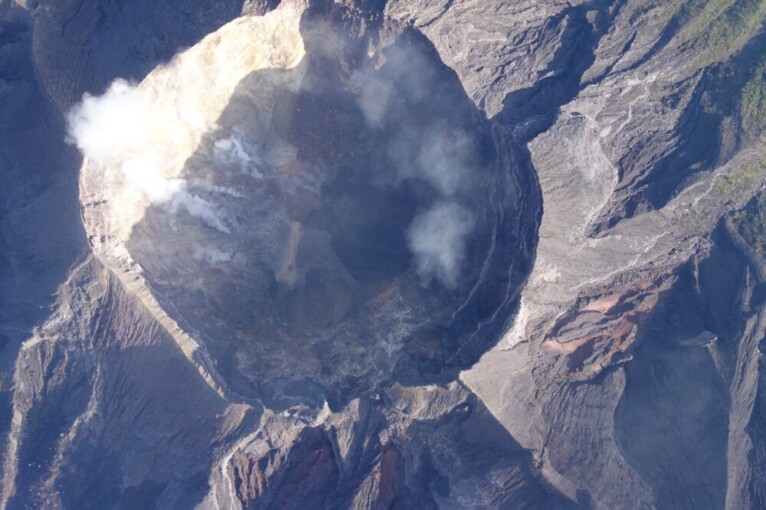
A drone, owned by the Department of Geodesy Engineering, Faculty of Engineering, Universitas Gadjah Mada succeeded in mapping the areas around the slopes of Mt. Agung in Bali. The team from the Geodesy Engineering department were dispatched to Mt. Agung upon a direct request from the National Disaster Mitigation Agency (Indonesian acronym: BNPB). Collaborating with UGM’s Disaster Response Unit (DERU) and BNPB, the team made a map of the areas around Mt. Agung. Led by the Head of Drone Team from the Department of Geodesy Engineering, Ruli Andaru, S.T., M.Eng., drone Buffalo FX-79 was flown on Thursday (19/10) from Kubu village road which is located within 11 kilometers of the peak of Mt. Agung.
The mapping of the slope areas was started from an altitude of 700 meters and the team succeeded in making a map covering an area of 1,000 hectares which includes the Area Prone to Disaster I and Area Prone to Disaster II. The windy conditions became the main hurdle in this mapping. The strong wind caused turbulence for the drone. Fortunately, Buffalo FX-79 succeeded in reaching its highest altitude point at the fourth attempt. Buffalo FX-79 succeeded in flying at an altitude of 4,000 meters, while the total height of Mt. Agung is only 3,142 meters above sea level. It surpassed the drone of the Koax Flyer team from Jakarta, which previously had only reached an altitude of 1,400 meters.
At the altitude of 4,000 meters, Buffalo FX-79 succeeded to take a picture of Mt. Agung covering an area of 3.5 x 5 kilometer. At least 400 pictures were successfully taken by the drone. According to Ruli, those pictures include visuals of the crater, both of the crater’s cracks, the crater’s material, and the crater’s fluid. Ruli said those pictures will be processed using the photogrametric method, in order to produce mosaic pictures and Digital Terrain Models (DTM).
“The team has taken pictures that can be used to predict the lava flows on the slope areas,” said Ruli Andaru.
In the near future, the drone team will try to take video-based pictures. Ruli said this video-based method will produce a different mapping.
“Using video, the mapping coverage will be wider and we can recognize the interaction or activities happening around the crater, including the smoke’s direction and so forth,” said Ruli.

